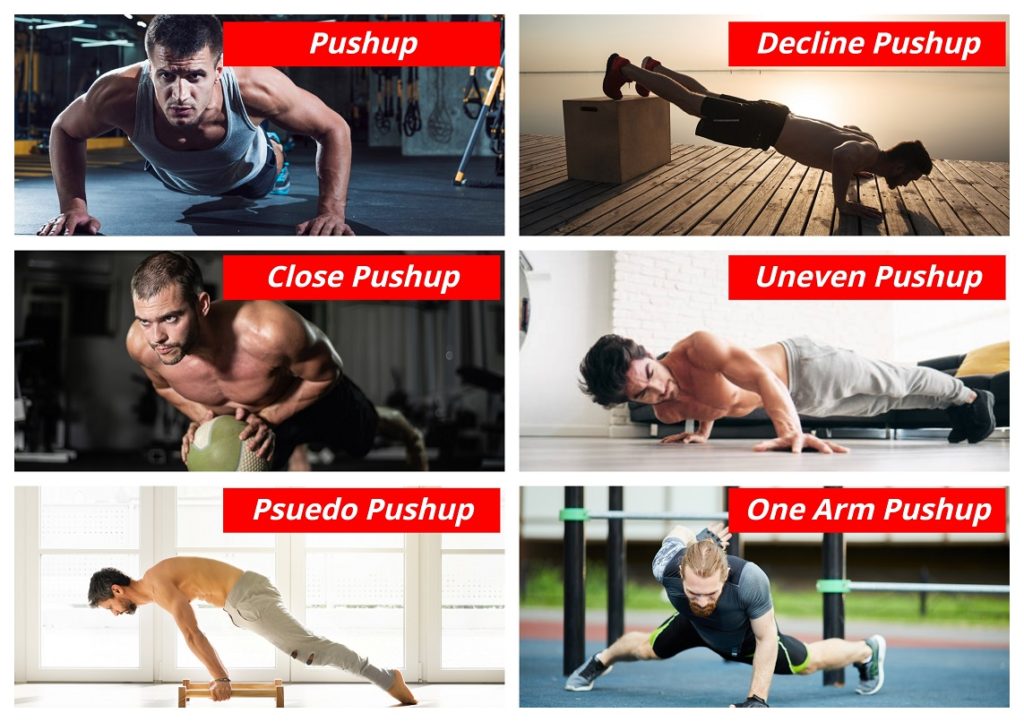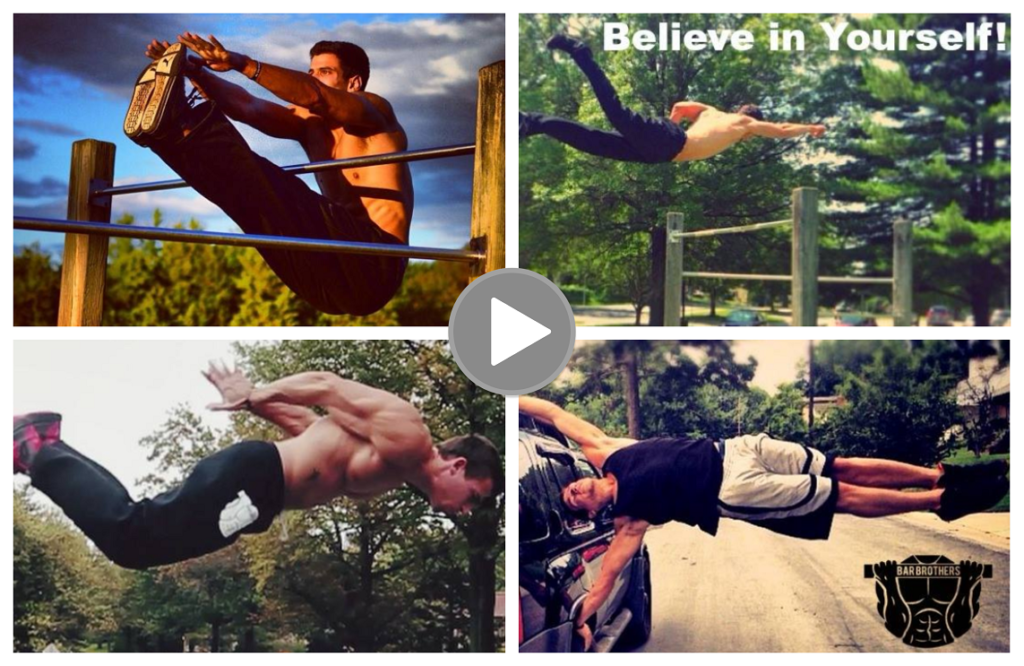Disclosure: This post contains affiliate links. Meaning if you click on a link and make a purchase, I'll earn a small commission at no extra cost to you.
The first time I tried to plan my own bodyweight training program, I kinda missed the mark, BIG time.
I remember sitting down and compiling a list of random bodyweight exercises and throwing them together in a way that (when I look back) made absolutely no sense whatsoever.
And to be honest, I probably neglected more than one of the major compound exercises that were optimal for getting results.
Training my legs was often an afterthought as well. And usually just resulted in me hammering out a quick set of 30-40 bodyweight squats at the end of every workout and calling it a day.
Now, don’t get me wrong. An unstructured bodyweight training program is WAY better than no program at all. But still, with a lack of knowledge often comes the inability to maximize your results.
And since you’re reading this, I can only assume that you’re looking to get the most bang for your buck every time you workout.
So with that said, in today’s not so epic blog post, I’m going to be taking you through all the do’s, don’ts, and hell no’s when it comes to structuring an effective plan of action to get you results.
Let’s get cracking…
Table of Contents
What To Look For In A Bodyweight Training Program

Now, I don’t personally know you. So I don’t know if you’re a complete beginner, or if you’ve been training with your own bodyweight for years.
Either way, I can almost guarantee that at least one of the many things I’m about to cover below will significantly impact the way you approach your training in the future.
But before I do, it’s important to first highlight the 4 critical components I look for before buying into any type of training program.
Some will probably carry more benefits than others, depending on where you’re currently at. But every program you consider should at least touch on each of the following…
#1 – It must cover the basics
This goes without saying really. Any bodyweight training program you invest in should, at the very least, cover the fundamental movement patterns…
…Technique
And correct form to be considered anywhere close to a reputable program.
#2 – It should provide an extensive list of beginner to advanced progressions
Again, another essential for any type of program.
I’ve seen a few progressive bodyweight programs in my time. And while some are better than others, the program that’s really going to get you results is the one that covers every progressive detail.
I’ve seen far too many programs that go from beginner to advanced progressions way to quickly.
The result?
Your progress usually ends up stalling somewhere down the line. And with that, your dream of becoming the ultimate master of your own bodyweight.
#3 – An effective bodyweight training program should give you step-by-step guidance.
Basically, it should not only show you what to do, but it should also help you develop a greater understanding of exactly why you’re doing it.
Studies have proven that people who understand exactly why they’re getting results are much more likely to follow through with what they’re trying to accomplish.
Not to mention you’ll also be able to start structuring your own workouts at a later date if you choose.
#4 – A bodyweight training program must provide some degree of motivation and support.
To be honest, some need this more than others. But providers of a reputable program really care about you and the results you get.
Things like community support, weekly Q&A’s and regular training updates are essential for some people to keep them on track.
What’s The Best Bodyweight Program For Me

Well, that depends.
Personally, I’m kind of a balls to the wall type of guy. And with that, comes a desire to hit my workouts hard and fast to get the best results I can.
So speaking strictly from personal experience, I’d always recommend a training program like Bar Brothers to hit the ground running.
Here’s why…
Firstly, it covers a lot of ground from basic to advanced progressions. And as I said earlier, this is an essential element to seeing consistent progress with any type of bodyweight training program.
And second, it’s got the whole brotherhood/worldwide movement type feel to it. Along with a private community of hardcore fans to point you in the right direction if you ever need help.
Now, I’m not the ass-kissing type of guy that’s gonna rave all day about how awesome this program is because it’s not really my style.
But if you want to see what the entire programs about in all its glory, then the video below would be a good place to start…
WATCH VIDEO: Learn How To QUICKLY Master The Planche, Muscle-Up, Human Flag, And Other Advanced Calisthenic Moves That Defy The Law Of Gravity
(Video Will Open In A New Window)
Be warned though, it’s got kind of a “Go Hard Or Go Home” approach to the whole thing. So if you’re not prepared to go all-in with this program, then I’d recommend giving it a miss.
Movement Patterns, Leverage, And The 9 Advanced Progressions
Now, I’m willing to bet that at least 90% of the population thinks that bodyweight training involves nothing more than a few basic movements like pullups, pushups, dips, and squats.
And while performing these specific exercises is great. It’s only a small piece of the puzzle when it comes to creating a complete routine that ticks all the boxes.
The 6 Main Movement Patterns
Specifically, there are actually 6 main movement patterns you should be focused on to create a complete, well-rounded workout.
These include…
- Vertical Pull (Pullups/Chinups)
- Vertical Push (Parallel Bar Dips/Handstand Pushups)
- Horizontal Pull (Inverted Rows)
- Horizontal Push (Pushups)
- Squat
- Hinge Movement (Bodyweight Deadlifts/Hip Thrusts)
Utilizing all 6 of these movement patterns pretty much covers all you bases when structuring an effective training program.
You could add a few supplementary exercises into the mix. But sticking with these 6 core moves should be more than enough for you to start seeing decent results.
The 9 Advanced Progressions

Now, along with these 6 movement patterns comes a range of advanced progression that you can work towards to really kick your workout into overdrive.
I won’t lie. Some of these exercises can take months or even years to learn. But the satisfaction you’ll get from mastering even one of these moves will be more than enough to give you bragging rights to all your gym buddies.
Anyway, here they are…
- One Arm Pushup
- One Arm Pullup
- Handstand Pushup
- Muscle Up
- Pistol Squat
- L-Sit
- Human Flag
- Front Lever
- Planche
As you can see, there’s quite a range here. But every one of these exercises requires careful planning before you even think about attempting them.
And that’s where leverage comes into play…
Leverage And Weight Distribution
Basically, leverage is just a way of distributing your weight to make an exercise harder.
Take the pushup, for instance…
Now, if I were to ask you to go straight from being able to perform a standard pushup straight into a one-arm pushup. Chances are you’d fall flat on your face.
This is because you’re pretty much doubling the amount of weight you have to push in one fell swoop.
Not to mention the fact that the core stability you need to pull this move off is nothing short of epic.
So instead, what you’d want to do is work on progressive pushup variations that use leverage to kind of ease you into the process.
Like the ones pictured below…

It might take a while, but working through every one of these progressions is key to building up the required amount of strength to be able to successfully attempt the one-arm pushup.
And it’s the same for every other progression on the list.
If you’re serious about learning any of these moves, I recommend taking a look at some of my previous blog posts, which cover a few of the progression in a lot more detail…
Related Blog Posts:
- The Ultimate Pushup Progression Guide For Muscle Strength & Power
- Planche Progression – How To Quickly Master The Full Planche
- Muscle Up Progression – My Epic Journey Above The Bar And Beyond
- Pullup Bar Workouts & Progressions – How To Quickly Master The Bar
Core Engagement & Isometric Strength
Another point I quickly want to touch on is both core engagement and isometric strength.
Usually, the two go hand in hand with particular exercises like the L-sit or the plank. But what you might not realize is the effect some of the more basic moves and their progressions can have on your core.
Provided you do them correctly.
Take the classic pullup, for example…
When you perform a pullup, most people just tend to pull themselves up and down with little thought on what muscles they’re actually working.
This usually ends up doing nothing more than mildly activating the biceps and back, with little stimulation to the muscles that are actually needed to gain real strength.
Instead what you should be doing is both bracing your core by holding yourself in a hollow body or L-sit position while performing the move… (see image)

Another thing you need to consider the benefits of performing the pullup from a dead hang position.
Not only will this increase your range of motion, but it’ll also make sure you’re activating your scapula (shoulder blades), which is a critical component for performing the pullup with good form.

This is the correct movement pattern for a pullup. But this is something you should be aiming for with every single bodyweight exercise you do.
It’s the same for isometrics as well…
Take the classic plank pose, for instance.
Now, when most people get into the plank position, they tend to just hover off the ground aimlessly, thinking that they’re getting a good workout in.
And while I would argue that this is great for a beginner who can’t hold the plank for longer than 30 seconds. Once you reach a point in your fitness when you can hold the plank for more than 60 seconds, the amount of core activation it provides becomes minimal.
Instead, what you should do is slowly exhale until you feel your abs tighten. And then brace your core for full effect.
Once your core is fully engaged, all you have to do is simply attempt to draw your elbows and feet together to further activate your core.
Your body won’t actually move, but this will instantly make the exercise insanely difficult. But it will also provide the stimulus your muscles need to continue to adapt and get stronger.

I could give you dozens of more examples, but to be fair, I don’t want to bore you with the technical side too much. So for now, I’ll just leave it at that.
Taking Your Bodyweight Training To The Next Level
A lot of what I’ve covered above is just the starting point for creating a bodyweight training program that gets you results.
I could drag out this entire post by going into detail about every single progression.
But to be honest, it’s WAY too much content to consume in one sitting, and I can almost guarantee that your head would be spinning by the end.
Instead, I’d recommend taking a quick look at the Bar Brothers Program.
This will allow you to really sink your teeth into the exact step-by-step processes you’ll need to get your body and fitness to where you want it to be.
WATCH VIDEO: Learn How To QUICKLY Master The Planche, Muscle-Up, Human Flag, And Other Advanced Calisthenic Moves That Defy The Law Of Gravity
(Video Will Open In A New Window)
It’s not free, but for less than 50-bucks, you’ll get your hands on everything you could possibly want from a reputable bodyweight training program.
And what’s more, I’ll even throw in a few my own little training manuals worth over $100 if you end up buying the program through any of the links on this page.
This includes…
…HIIT to Fit
…Functional Strength
…And Kettlebell Transformation
Here’s what they look like on the surface…

Now, as you can see, these classic eBooks sell for anything from $27-$47.
But they’re your’s free if you decide to invest in the Bar Brothers Program.
If you want them, just send me proof (screenshot or receipt) that you purchased Bar Brothers via the contact form on this website…
…Or by emailing me directly at Dan@Un-Ripped.Com
And I’ll get them sent over to your email address ASAP.
Anyway, I think I’ve about covered what you should typically look for in a bodyweight training program.
Obviously, I’ve touched on the basics and a few things you need to consider, but I’d also like to hear your thoughts.
Have you ever attempted a bodyweight training program, and if so, what were your results?
Drop a comment in the comments section below and let me know what you think…

